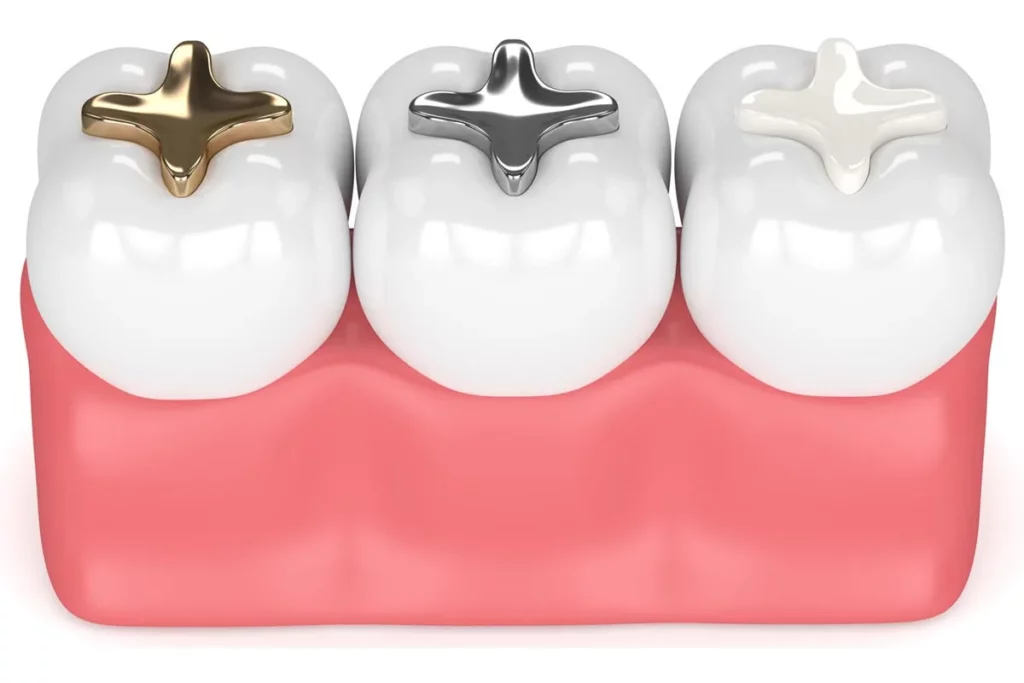Dental health is an essential aspect of overall well-being, and maintaining strong, healthy teeth is crucial for proper oral function.
However, there are times when dental problems arise, necessitating the need for tooth filling or extraction.
In this comprehensive guide, we will delve into the details of tooth filling and extraction so that you can make informed decisions about your oral health with the help of dental professionals at Klinika Dental Clinic, Al Barsha, Dubai.
What is Tooth Filling?
Tooth filling is a dental procedure performed to restore a damaged or decayed tooth back to its normal function and shape.
Dental fillings are used to repair cavities, cracks, and other minor dental issues caused by decay or trauma.
The procedure involves removing the decayed portion of the tooth and filling the cavity with suitable materials to prevent further decay and restore the tooth’s integrity.
Types of Tooth Fillings
Tooth fillings come in various types, each offering its own unique set of benefits and drawbacks. The commonly used options include:
Composite (White) Fillings: These fillings blend well with natural teeth, making them a popular choice for visible areas. They are, however, less resistant to wear compared to amalgam fillings.
Ceramic Fillings: These tooth-colored fillings are stain-resistant and offer good aesthetics and durability, but they can be brittle and more costly.
Amalgam (Silver) Fillings: These are durable and cost-effective, but their metallic appearance may be less aesthetically pleasing.
Gold Fillings: Gold fillings are highly durable and biocompatible, but their expense and distinct color limit their widespread use.
Glass Ionomer Fillings: These are used for specific applications, including in children’s teeth and non-load-bearing areas, as they are less durable than other options.
The Tooth Filling Process
The tooth filling process typically involves the following steps:
Examination: The dentist examines the affected tooth and takes X-rays to determine the extent of the damage and the appropriate treatment.
Anesthesia: Depending on the case, before the filling procedure begins, the dentist may administer a local anesthetic to numb the area around the affected tooth, ensuring a painless experience.
Removal of Decay: The decayed or damaged part of the tooth is carefully removed using a dental drill, leaving behind a clean and healthy cavity.
Filling Placement: Once the tooth is prepared, the chosen filling material (such as composite or ceramic) is placed into the cavity. The material is shaped and hardened to fit the tooth’s natural contour.
Finishing: The dentist trims and polishes the filling to ensure a smooth and comfortable bite.
The tooth filling process is relatively quick and can effectively restore the tooth’s function and appearance while preventing further decay or damage.
Regular dental check-ups at Klinika Dental Clinic, Al Barsha, Dubai can help identify any potential cavities early on, making the filling process less invasive and more successful.
Should You Consider Tooth Filling?
If you have a tooth that is decayed, damaged, or has a minor fracture, you should definitely consider getting a tooth filling.
Tooth fillings are essential for restoring the tooth’s integrity, preventing further decay, and protecting it from more extensive damage. Neglecting to address such issues can lead to increased pain, infection, and even tooth loss over time. Furthermore, a tooth which could have been treated by filling may then need root canal treatment due to the delay of treatment.
By opting for a tooth filling, you can maintain the function and aesthetics of your teeth while ensuring long-term oral health. It is crucial to consult with a dentist who can assess your specific situation and recommend the most suitable type of filling for your needs.
What is Tooth Extraction?
Tooth extraction is a dental procedure that involves the removal of a tooth from its socket in the jawbone.
Extraction is typically performed when a tooth is severely damaged, decayed beyond repair, or causing overcrowding in the mouth.
Types of Tooth Extractions
There are two main types of tooth extractions: simple extractions and surgical extractions.
Simple Extraction
This type of extraction is performed on visible teeth that have fully erupted from the gumline. The dentist uses forceps to grasp and gently rock the tooth back and forth, loosening it from the periodontal ligaments that hold it in place. Once sufficiently loosened, the tooth is lifted and extracted from the socket.
Surgical Extraction
Surgical extractions are more complex and are required for teeth that are not fully erupted, severely damaged, or broken off at the gumline. In these cases, an incision is made in the gum to access the tooth or its roots. The dentist may need to remove some bone tissue or cut the tooth into sections for easier removal.
This procedure often requires stitches to close the incision after the tooth has been extracted.
When Is Tooth Extraction Necessary?
Tooth extraction is a significant dental decision. It may be necessary if a tooth is severely decayed or damaged beyond repair, preventing further infection.
In orthodontic treatments like braces, overcrowding can be addressed through tooth extraction to create space for proper alignment. Impacted wisdom teeth, which can cause pain and dental issues, might also require extraction.
However, before proceeding with extraction, consulting a dentist is crucial. They will assess the individual’s specific dental condition, consider potential alternatives, and discuss the potential risks and benefits.
Maintaining good oral hygiene and regular dental check-ups can help prevent situations that may necessitate tooth extraction.
Seek Professional Help
When facing dental issues like cavities or severely damaged teeth, seeking professional help for tooth filling and extraction is crucial. Tooth fillings are used to treat cavities and prevent further decay, preserving the natural tooth structure.
However, in cases of extensive decay or irreparable damage, tooth extraction may be necessary to prevent infection and maintain overall oral health.
A qualified dentist just like we have at Klinika Dental Clinic, Al Barsha, Dubai will assess the specific condition, recommend the most suitable treatment, and ensure a comfortable and safe procedure.
Regular dental check-ups can help identify problems early, reducing the likelihood of extensive treatments like extractions and promoting better oral well-being.
Conclusion
Tooth filling and extraction are vital dental procedures aimed at restoring and preserving oral health.
By understanding the processes, types of treatments, and aftercare tips, you can approach these procedures with confidence and work towards maintaining a healthy, beautiful smile.
Always consult with your dentist for personalized advice and treatment recommendations tailored to your unique dental needs from Klinika Dental Clinic, Al Barsha, Dubai.
Remember, a proactive approach to dental care is the key to enjoying the benefits of healthy teeth and gums.



0 comments on “All About Tooth Filling and Extraction: A Comprehensive Guide”